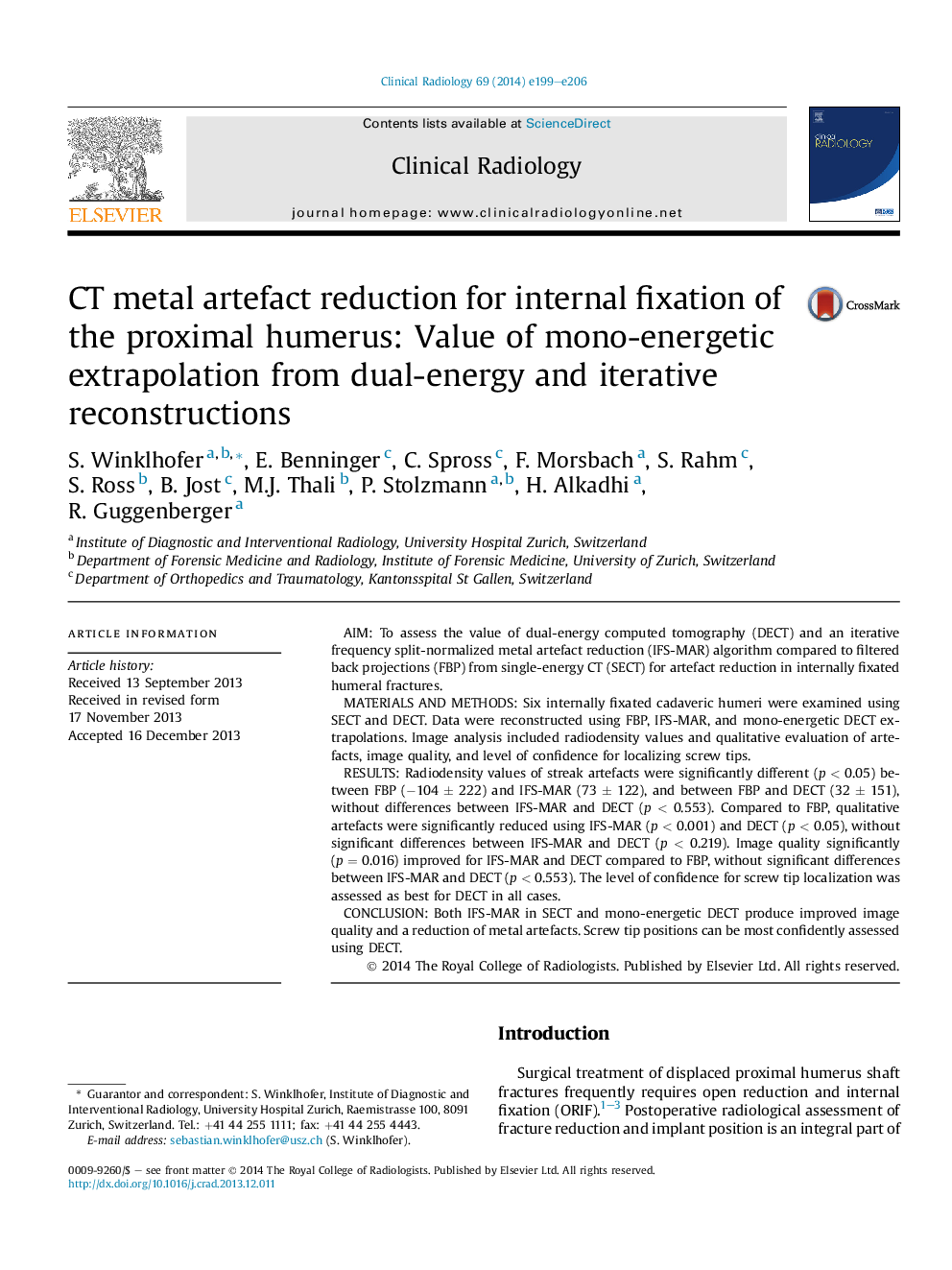| Article ID | Journal | Published Year | Pages | File Type |
|---|---|---|---|---|
| 3982346 | Clinical Radiology | 2014 | 8 Pages |
AimTo assess the value of dual-energy computed tomography (DECT) and an iterative frequency split-normalized metal artefact reduction (IFS-MAR) algorithm compared to filtered back projections (FBP) from single-energy CT (SECT) for artefact reduction in internally fixated humeral fractures.Materials and methodsSix internally fixated cadaveric humeri were examined using SECT and DECT. Data were reconstructed using FBP, IFS-MAR, and mono-energetic DECT extrapolations. Image analysis included radiodensity values and qualitative evaluation of artefacts, image quality, and level of confidence for localizing screw tips.ResultsRadiodensity values of streak artefacts were significantly different (p < 0.05) between FBP (−104 ± 222) and IFS-MAR (73 ± 122), and between FBP and DECT (32 ± 151), without differences between IFS-MAR and DECT (p < 0.553). Compared to FBP, qualitative artefacts were significantly reduced using IFS-MAR (p < 0.001) and DECT (p < 0.05), without significant differences between IFS-MAR and DECT (p < 0.219). Image quality significantly (p = 0.016) improved for IFS-MAR and DECT compared to FBP, without significant differences between IFS-MAR and DECT (p < 0.553). The level of confidence for screw tip localization was assessed as best for DECT in all cases.ConclusionBoth IFS-MAR in SECT and mono-energetic DECT produce improved image quality and a reduction of metal artefacts. Screw tip positions can be most confidently assessed using DECT.
